
MOTORCYCLE ENGINE- TYPES,CONFIGURATIONS AND FEATURES.
July 20, 2020
The basic layout of an engine is something like the core DNA of a motorbike, and one of the biggest assets in marketing.
AN INTRODUCTION TO THE HEART OF A MOTORCYCLE
Motorcycle engines must be lightweight and compact and have a good power output without compromising the environment. The basic layout of an engine is something like the core DNA of a motorbike, and one of the biggest assets in marketing.
manufacturers like Kawasaki, Triumph, BMW and Suzuki started entering the market with performance-oriented motorcycles sporting multiple cylinders. These range from parallel twins to massive flat-six engines. But their layouts, advantages and disadvantages can be a bit confusing, so let’s take a closer look at each type of engine to help you understand it better.
ENGINE TYPES
Single Cylinder
A single-cylinder architecture is most commonly used on commuter motorcycles because it’s cheap to produce and easy to fix and maintain. A lonely piston does all the hard work here, but being an inherently unbalanced system, it’s prone to a lot of vibration, especially in the case of larger cubic capacities.
So it’s optimal for small displacement motors (i.e. 100-200cc), as it keeps the reciprocating mass (piston) low, and is seen regularly on budget-friendly motorcycles , single-cylinder engines can also be found on performance motorcycles, such as motocross bikes or rally bikes, or even the world’s most powerful single-cylinder bike, the KTM 690 Duke.
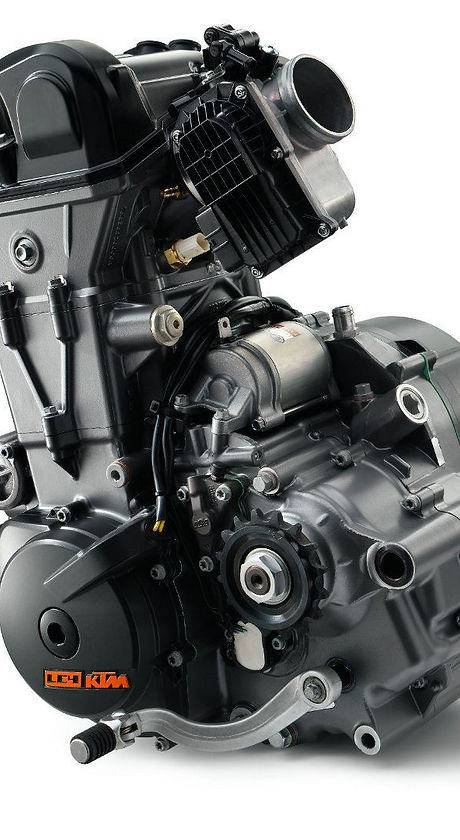
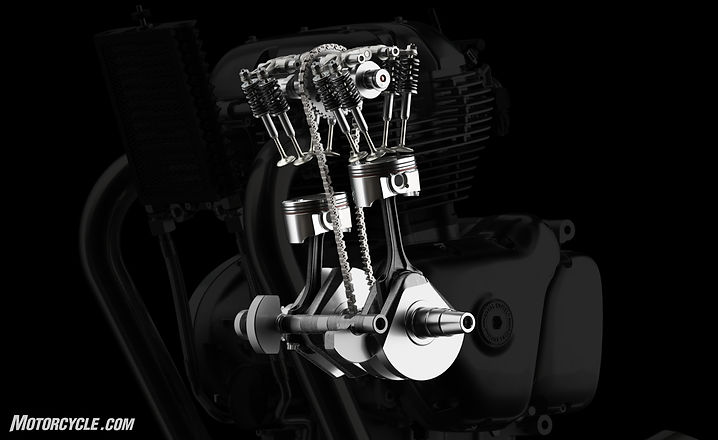
MOST BIKES WERE TWIN CYLINDERS-TILL THE JAPANESE BRANDS INTRODUCED INLINE FOURS
Parallel twin
Parallel twin engines or an inline-two engine have an extra cylinder at their disposal. The main distinction of parallel twin engines is that they have these two cylinders placed parallel to each other and they share one-cylinder block (unlike V-twins which require two separate cylinder blocks). This type of engine construction is often seen on entry-level sportbikes such as the Yamaha R3 or Kawasaki Ninja 300, but is in use even on large-capacity cruisers and middle weight adventure motorcycles. This layout is preferred for its compact dimensions and ease of construction (as compared to a V-twin). It’s generally a more balanced system compared to a single cylinder as the movement of one piston cancels out the movement of the other. So, they offer smoother power delivery compared to V-twins.
Twin cylinders enables us to reduce the stroke length of engine for the same capacity and it is possible to extract more power from the engine which is seen that the R3 is 0.9 bhp less than the RC 390 despite a difference of 69 CC, also Reduced stroke means higher revs due to lower connecting rod inertia and faster.
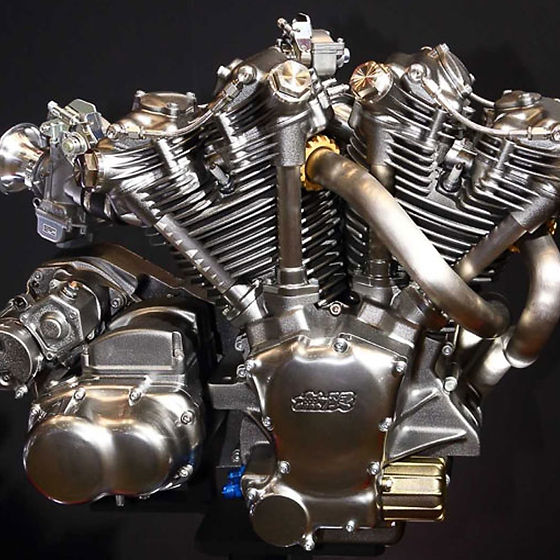
V TWIN
As the name suggests, the arrangement of the two-cylinders forms a “V” here. Bike makers have tried various angles between the cylinder heads and each has their own preferred configuration. Harley-Davidson, for example, runs with a 45-degree V angle on nearly all their motors as it gives them loads of bottom-end torque and that distinct ‘potato-potato’ exhaust
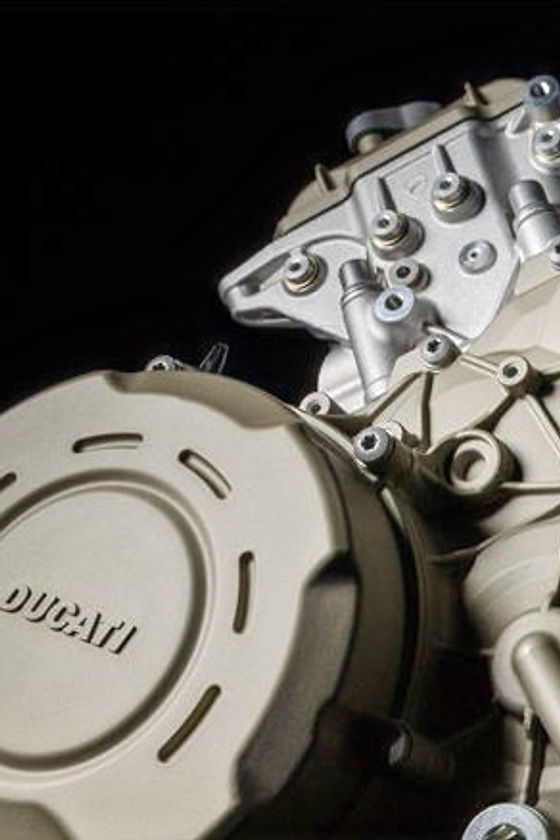
L TWIN
90° V Twin
Ducati use a 90-degree V angle on their angled V-twin motors (when one cylinder is nearly horizontal and the other is nearly vertical - also called an L-twin). While most V-twins are mounted with transverse crank layout (where the crankshaft runs perpendicular to the bike’s longitudinal axis), some manufacturers such as Moto Guzzi have chosen to go with a longitudinal crank layout (where the crank is laid out along the bike’s longitudinal axis). V-twin engines have an uneven firing order which gives them the angry "burbling" exhaust note and are known to produce a ton of torque at low revs, but are also known to have a fair amount of vibrations and require balancer shafts to cancel them out.
AND THEN THERE WERE THREE
Inline Triple
An inline-three mill uses three parallel pistons housed within the same cylinder block. The main advantage of this type of configuration is that it offers somewhat of a middle ground between a V-twin and an inline-four engine.
It’s a lot smoother compared to a V-twin and is narrower than an inline-four, making it easier to shoe into the compact dimensions of a sportbike. This configuration does have the tendency to rock end-to-end slightly as cylinders one and three are near the opposite ends of their strokes.
Also, unlike an inline-four mill, the vibes cannot be cancelled out thanks to the odd number of cylinders. Sportbikes made by Triumph such as the Daytona and the street triple series and the Yamaha 900cc models are such examples.
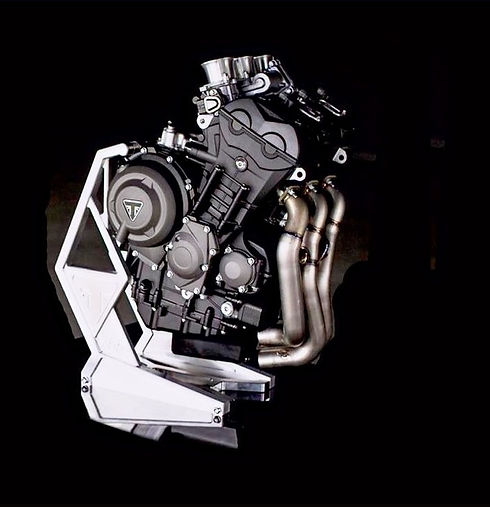
FROM THE LAND OF THE RISING SUN
Inline Four
When you have four parallel cylinders packaged in a single cylinder block, you get an inline-four engine. With an even number of pistons, the movement of the pistons can be balanced out really well, making them one of the smoothest running engines on a bike. This smoothness allows them to be revved very high without risking damage to engine components through vibrations, and hence these have some of the best power-to-weight characteristics of any motorcycle engine configuration, although that does make power delivery quite peaky, this is the go-to configuration for almost all 600-1000cc sportbikes .
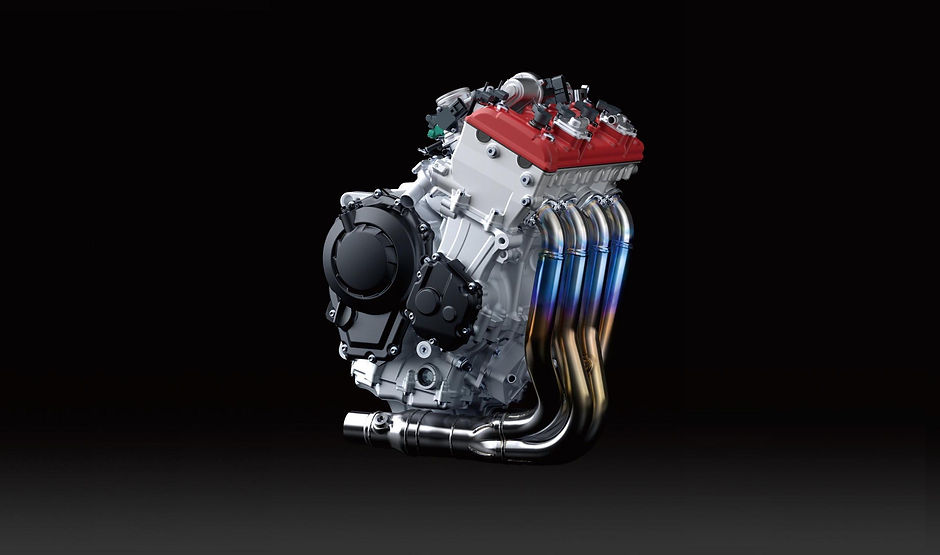
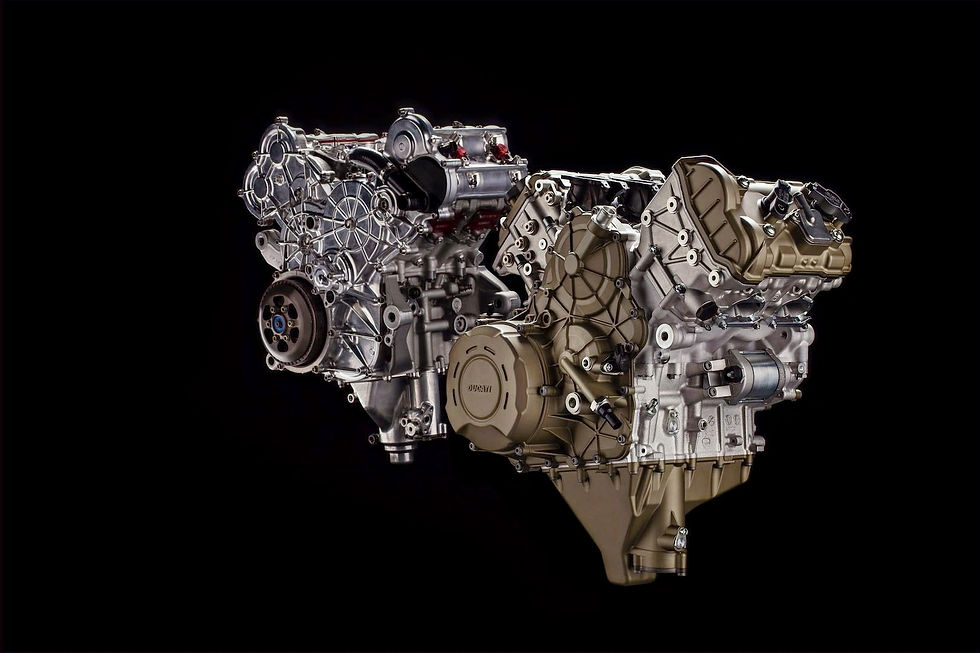
THE MASTERPIECE
V4
A V4 engine is basically two V-twins stuck together. It has some of the smoothness of an inline-four mill and the raw bottom-end torque delivery of a V-twin. All this while sounding like a raging bull. It’s also more compact than a transverse inline-four, which makes for a snug fit inside the motorcycle frame. Although, having two sets of cylinders at opposite ends means manufacturing two intake and exhaust systems, cylinder heads etc. which makes a V4 engine more expensive to produce V4’s are also usually heavier than inline-fours, though there’s no denying the exhaust note they produce is nothing short of sublime.
Heat can be an issue, especially if you have a transversely mounted V4. In this scenario, the heat of the front bank of cylinders will flow over the rear bank, causing them to heat up in a slightly uneven manner. Bikes with this configuration are often seen to have their rocker covers or entire cylinder heads poking out of the bike’s fairing as a way of dissipating the heat.
THE BOXER ENGINE
Flat Twin
The horizontal or “flat” layout of the engine is commonly known as a boxer engine. Here, the two pistons are laid out on opposite sides of the crankshaft. A flat-twin’s firing order is the same as a 360-degree parallel twin; however, in this case, the pistons are moving away from each other rather than in sync. The complicated setup is expensive to manufacture, maintain and fix. Also, since their crankshaft is in the motorcycle’s longitudinal axis, these bikes are known to have a ‘torque reaction’, where the bike is pushed in the opposite direction of the crank’s rotation when the throttle is opened.
But the advantages of this layout are that it keeps the bike’s centre of gravity low and allows for better air-cooling of the cylinders as they are exposed to more air on each side of the bike when in motion.

TWO STROKE MACHINES
Two-stroke engines have fewer moving parts than four-stroke engines, and produce twice the number of power strokes per revolution.
Two-stroke engines often have a high power-to-weight ratio, power being available in a narrow range of rotational speeds called the "power band". Compared to four-stroke engines, two-stroke engines have a greatly reduced number of moving parts.
Nevertheless, two-strokes have been largely replaced on motorcycles in developed nations due to their environmental disadvantages. Cylinder lubrication is necessarily total-loss and this inevitably leads to a smokey exhaust, particularly on wide throttle opening
Many modern two-stroke engines employ a power-valve system. The valves are normally in or around the exhaust ports. they alter the exhaust port by closing off the top part of the port, which alters port timing, or by altering the volume of the exhaust, which changes the resonant frequency of the expansion chamber.
Direct injection has considerable advantages in two-stroke engines, eliminating some of the waste and pollution caused by carbureted two-strokes, where a proportion of the fuel/air mixture entering the cylinder goes directly out, unburned, through the exhaust port. Two systems are in use, low-pressure, air-assisted injection, and high-pressure injection.
Since the fuel does not pass through the crankcase, a separate source of lubrication is needed.
Most sports bikes now use a ram-air induction system where as road speed increases, more air is forced through ducts in the fairing to pressurize the airbox. Not to be confused with the original Ram-Air system where an air scoop/cowl was fitted to the top of the cylinder heads of Suzuki two-stroke engines to aid cooling.




